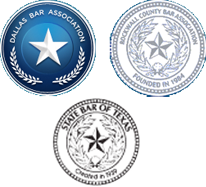If your car or truck loan is more than two and a half years old and you owe more than it’s worth, you may be able to keep your vehicle for a lot less money.
What’s a “Cramdown”?
 “Cramdown” is an informal term — you won’t find it in the federal Bankruptcy Code. In the context of vehicle loans, it is the procedure provided under Chapter 13 law for legally rewriting the loan, essentially to reduce the amount you must pay down to the fair market value of your vehicle. You “cram down” the debt to the value of the vehicle.
“Cramdown” is an informal term — you won’t find it in the federal Bankruptcy Code. In the context of vehicle loans, it is the procedure provided under Chapter 13 law for legally rewriting the loan, essentially to reduce the amount you must pay down to the fair market value of your vehicle. You “cram down” the debt to the value of the vehicle.
In changing the terms of the loan, you can often also reduce the interest rate and also often stretch out the payments over a longer period, all of this usually resulting in a significantly reduced monthly payment on the loan.
How Do You Qualify for a “Cramdown”?
First, the idea of a cramdown doesn’t make any sense unless your vehicle is worth less than the balance on the loan.
Second, to emphasize what was mentioned above, cramdown is ONLY available if you file a three-to-five year “adjustment of debts” Chapter 13 case, not a “straight bankruptcy” Chapter 7 case.
And third, your vehicle loan must have been made more than 910 days (slightly less than two and a half years) before your Chapter 13 case is filed.
Why Is “Cramdown” Legal?
Start with a common-sense idea of what a debt secured by collateral that is worth less than the debt really is — it’s only a partly secured debt. If you owe $10,000 on a truck worth $7,500, then that $10,000 loan is secured to the extent of $7,500. The remaining $2,500 of the loan is not secured by anything. The bankruptcy system tries to treat legally similar debts the same. So here, the unsecured portion of a secured vehicle loan is treated like the rest of the unsecured debts. If all the rest of the unsecured creditors were going to be paid 10 cents on the dollar, it would be unfair to the other unsecured creditors if you paid that $2,500 unsecured portion of the truck loan in full — at 100 cents on the dollar.
A “Cramdown” Example
Instead with “cramdown,” you are allowed to pay the $7,500 over time through your Chapter 13 plan payments at an appropriate interest rate, which may be your original rate but can often be lower, especially if that rate is unusually high. The reduced secured amount to be paid and a lower interest rate would reduce the monthly payment.
But that payment can be reduced substantially further by extending the repayment term further out than what the contract had provided, up to a maximum of five additional years. In this example, assuming an interest rate of 5 percent and a repayment term of five years, the monthly payment would be only about $141.50.
Remember the unsecured portion, here $2,500, would be paid at whatever percentage all your other unsecured creditors were being paid, often a relatively small percent. And often the existence of that unsecured portion would actually not cost you anything more. Why? Because in many cases you end up paying a set amount into your pool of unsecured creditors, and adding that $2,500 unsecured debt just reduces how much the other unsecured creditors are being paid, costing you no more.
You can see how the Chapter 13 vehicle loan cramdown is a fantastic tool for reducing both your monthly payment AND the total amount you have to pay until the vehicle is yours free and clear. If you are in the Dallas-Fort Worth metroplex, let Attorney Carrie Weir show you how this can work in your unique, personal situation. Please schedule a no-obligation, free, confidential consultation with us by calling 972-772-3083 or contacting us here .








Speak Your Mind